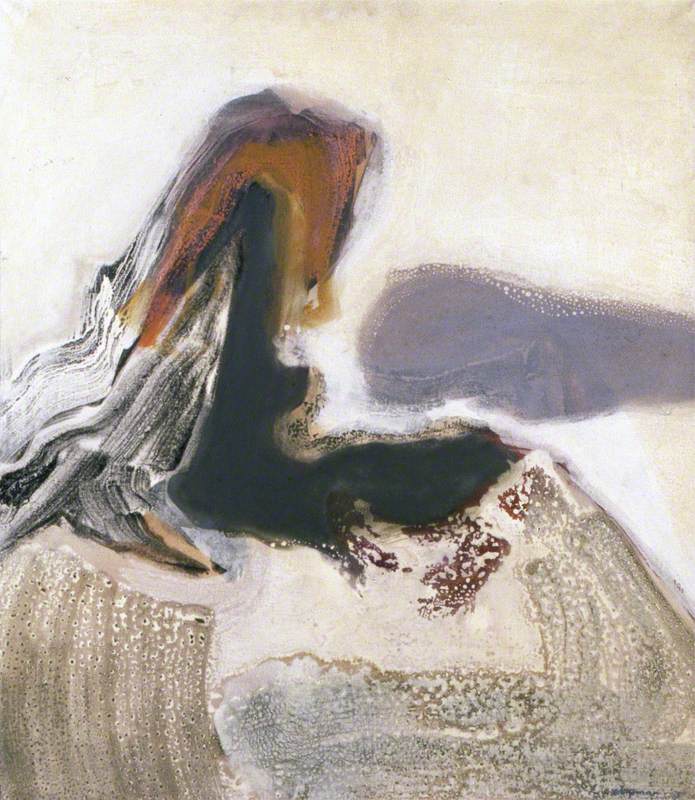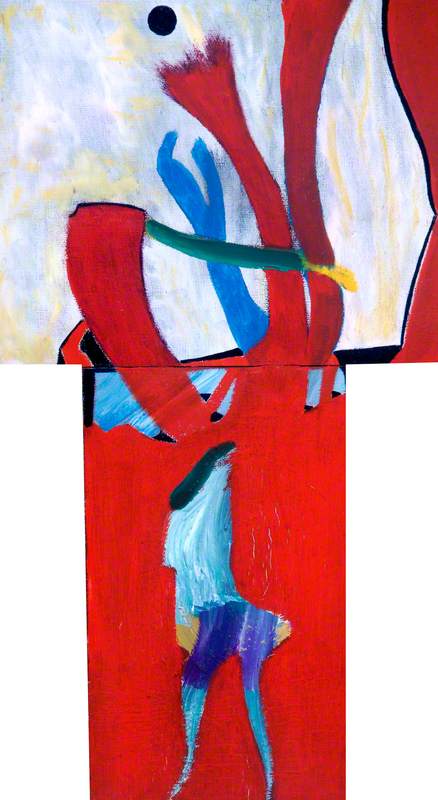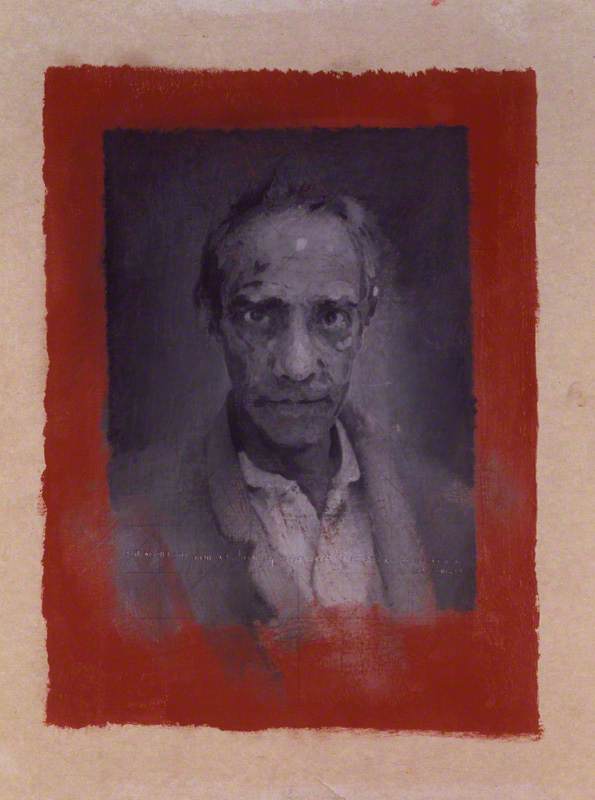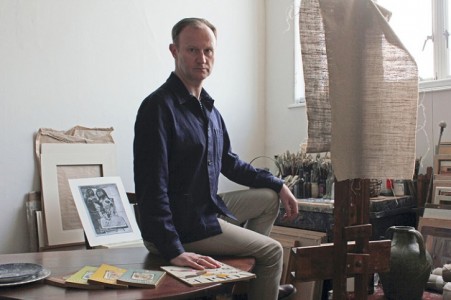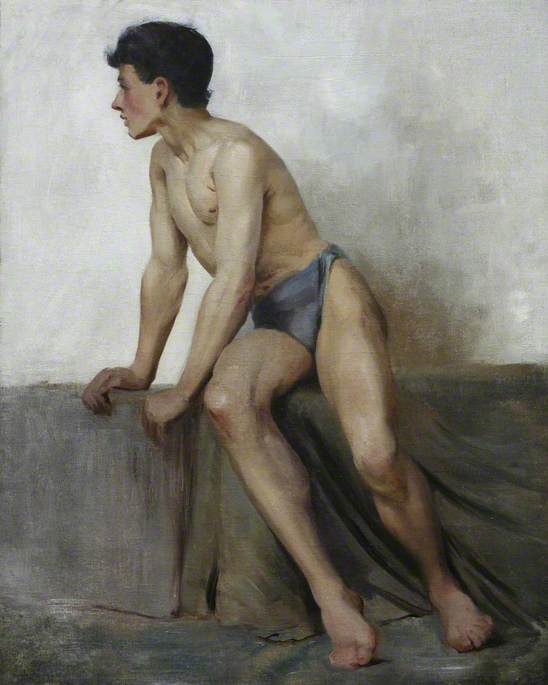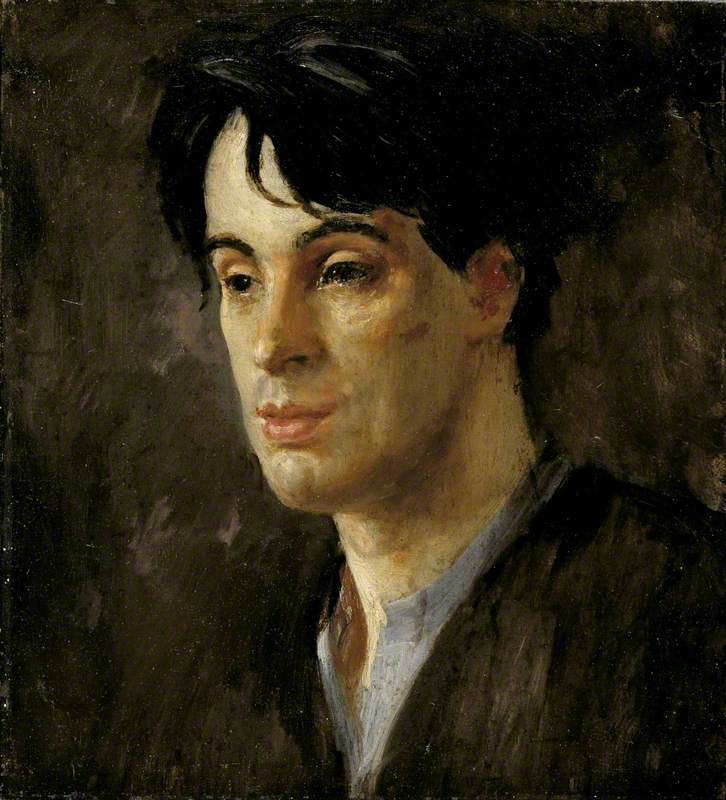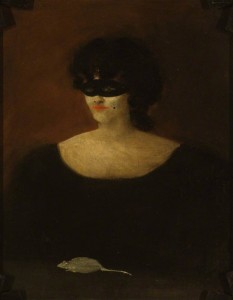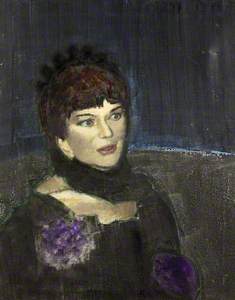Max Chapman and Oswell Blakeston formed an extraordinary and prolific couple, whose lives and achievements are little documented: the paintings on the Art UK website provide but a small sample of their diverse talents.
They first met in the late 1920s or early 1930s, and remained together thereafter. Blakeston came from a bourgeois Home Counties background. He ran away from home whilst a teenager, and first gained employment as a conjuror’s assistant before then working in the British film industry. During the course of his career he wrote copiously: fiction, non-fiction, poetry and criticism. He was also a painter and experimental filmmaker.
Chapman meanwhile worked as a painter, art critic, and occasionally illustrated Blakeston’s poetry. He was born in Dulwich, and from the age of 16 attended Byam Shaw School of Art, where one of his teachers was Charles Ricketts, with whom he established a friendship. Ricketts (1866–1931) lived at Regent’s Park with his companion, fellow artist Charles Shannon (1863–1937). The pair had been part of the fin de siècle circle of Wilde and Beardsley – Ricketts illustrated a number of Wilde’s books – and had also known Sickert, Bernard Shaw, and Diaghilev. For Chapman, unapologetically certain of his homosexuality from a young age, friendship with Ricketts surely served as affirmation of his own proclivities.
Upon leaving art school in 1930 Chapman went first on a scholarship to Italy, before then buying studio premises at Newlyn in Cornwall, previously used by the painters Dod and Ernest Procter. There he began his artistic career, producing figurative paintings influenced by Post-Impressionism and Matisse. He and Blakeston lived together in Mousehole, becoming fixtures of the Cornish artistic scene: both were drawn by Sven Berlin (Blakeston in 1939; Chapman in 1941) as part of a set of portraits entitled St Ives Personalities, whose subjects also included Barbara Hepworth and Bernard Leach amongst others (the set is now in a private collection).
Rosalind Fuller in 'The Marble Heart'
1975
Max Chapman (1911–1999) 
After a first one-man show in London in 1939, Chapman went on to exhibit widely in the UK and Europe. By the late 1950s, now living with Blakeston in London, he was making abstracts. The trigger for this stylistic change came upon seeing Jackson Pollock’s work: most probably at the 1958 Pollock retrospective at The Whitechapel Gallery. Amongst Chapman’s various explorations in abstraction was a technique he christened collages noyée, or ‘drowned stick-ons’, which involved the manipulation of collaged papers into a form of low relief, which were then unified beneath a skin of paint. He also explored combinations of water and oil based paints to achieve particular effects, as can be seen in three 1960s canvases here: Emersion to Brown, Chinese, and Wings. In each, water-based emulsion has been floated over oil paint, with glazes of oil later applied over areas of mottled dried emulsion. With their amorphous shapes and smoky diffusions of tonal colour, these immensely subtle paintings evoke elemental flux.
Later still Chapman resumed figurative painting, and in 1976 exhibited a series of portraits at the Camden Art Centre. His subjects included Blakeston and the actress Rosalinde Fuller, whose 1975 portrait is seen here. Painted with the sensitive economy of Chapman’s abstracts, the portrait is made from a black and white photograph of Fuller, likely to have been taken by Blakeston’s friend Francis Bruguière in the late 1920s. (A group of Bruguière’s black and white photographs of Fuller were donated to the National Portrait Gallery by Blakeston in 1983.)
Though Blakeston’s Adolescence (1982) – his sole painting documented here – might be said to have something of the formal invention of his partner’s abstracts, it is perhaps unsurprisingly a more literary painting, stylistically closer to Pop. Blakeston died in 1985. Chapman continued to paint until late on in life, and died 14 years later.
Many thanks to the following for their kind assistance in researching this article: David Buckman; Sylvia and Stephen Paisnel at The Paisnel Gallery, London; Michael Gaca and Richard Blackborrow at The Belgrave Gallery, St Ives; Helen Welford at MIMA, Middlesbrough.
Dr Ian Massey, independent art historian and curator – www.ianmasseyart.co.uk


